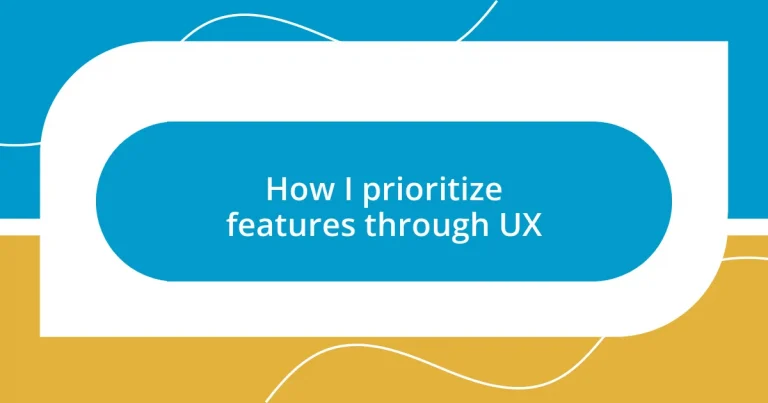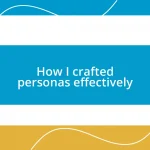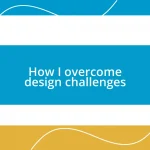Key takeaways:
- Understanding user needs is essential for prioritizing features; empathy and emotional context can reveal what users truly value.
- Utilizing frameworks like MoSCoW and RICE simplifies the prioritization process, allowing teams to clarify and align on important features.
- Continuous testing and iteration based on user feedback transform initial ideas into successful features, highlighting the importance of adaptability in design.
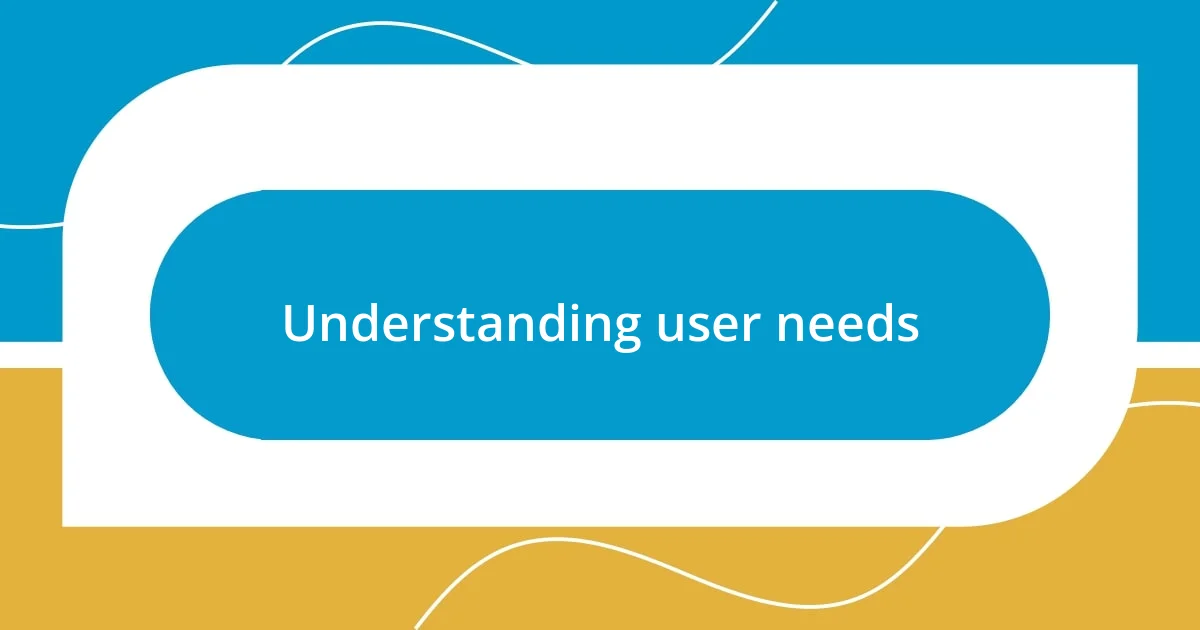
Understanding user needs
When diving into user needs, I often draw from my own experiences as a user myself. Think back to a time when you faced a frustrating app: what features did you wish it had? I remember feeling lost in a navigation app—simple route planning seemed glaringly absent. It’s these moments that remind me to truly listen to users; they shape my understanding of what features are not just nice-to-have but truly essential.
I find it crucial to empathize with users, not just to observe their behaviors but to feel their frustrations and joys. For instance, during recent interviews with users, I was surprised to discover that a minor feature—like the ability to customize notifications—brought them immense peace of mind. It’s interesting how sometimes the smallest details can resonate deeply, highlighting the importance of understanding the emotional context behind each need.
Have you ever struggled with an overly complicated process? It makes me wonder about the actual ‘must-haves’ in our designs. In my experience, when I prioritize features, the key is to strip everything down to what users genuinely require to fulfill their goals, stripping away unnecessary complexity. Ultimately, understanding user needs isn’t just about gathering data; it’s about connecting on a human level.
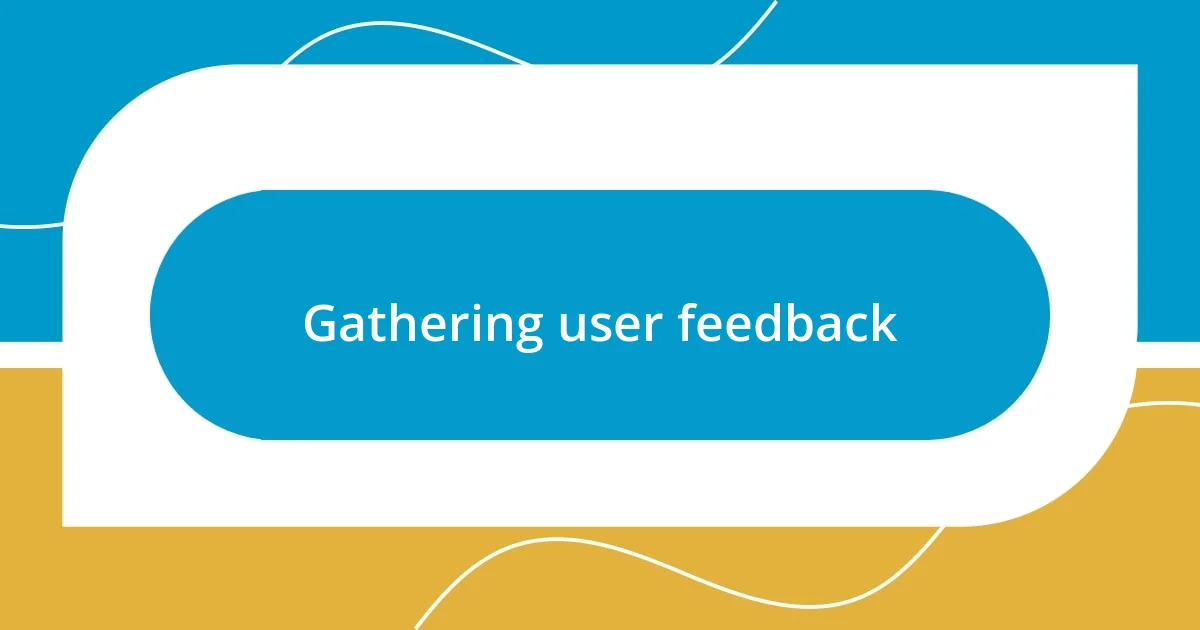
Gathering user feedback
Collecting user feedback is like holding a mirror to your product; it reflects what users truly think and feel. I’ve often relied on surveys and interviews, but the magic really happens when users feel comfortable sharing their honest thoughts. I remember attending a usability testing session and feeling the raw emotions of participants as they described their frustrations. Each furrowed brow or moment of hesitation was a treasure trove of insights into how the product resonated (or didn’t) with their needs.
In addition to traditional methods, I’ve found value in integrating feedback tools directly into my products. The instant reactions and comments users leave can be incredibly telling. For instance, when I added an in-app feedback button, I was overwhelmed by the wealth of information that poured in. Users were sharing ideas that never crossed my mind, transforming my approach to feature prioritization and making me realize how collaborative the process can be.
I think it’s essential not just to gather the feedback, but to create genuine conversations around it. Have you ever received feedback that surprised you? For me, a user once mentioned they appreciated a feature I thought was minor, illuminating its significance in their daily life. This exchange revealed how vital empathy is in the design process. Engaging users in this way nurtures a culture of openness and allows us to prioritize features that truly matter to them.
| Feedback Method | Strengths |
|---|---|
| Surveys | Structured, gathers quantifiable data |
| Interviews | In-depth insights, encourages storytelling |
| In-App Feedback | Real-time, user-friendly, spontaneous input |
| Usability Testing | Observe users in action, identify pain points |
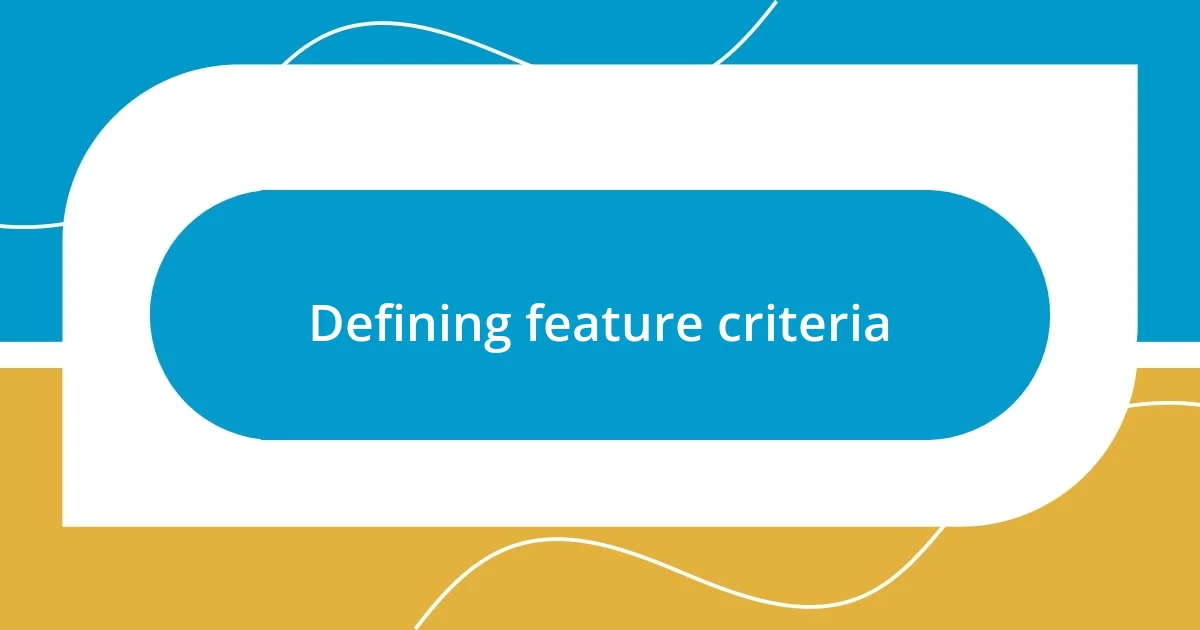
Defining feature criteria
Defining feature criteria is essential for focusing development efforts on what truly adds value. I often rely on a mix of user insights, business goals, and technical feasibility to guide my decisions. For instance, I once led a project where we were torn between two popular features. After discussing with users, it became clear they prioritized simplicity over flashiness. Being guided by user preference ultimately streamlined our offering and helped us create a more intuitive experience.
When I define criteria, I break it down into a few key aspects that matter most. These aspects help evaluate potential features fairly and strategically:
- User Value: Does the feature solve a real problem or enhance user satisfaction?
- Business Alignment: How does it support overall business goals?
- Technical Feasibility: Can we achieve this without overloading the development team?
- Effort and Impact: What is the balance of the effort required versus the potential impact on users?
- Scalability: Will this feature continue to deliver value as the product evolves?
I find this structured approach not only clarifies priorities but also brings the team together, ensuring we’re all aligned on what’s truly important.
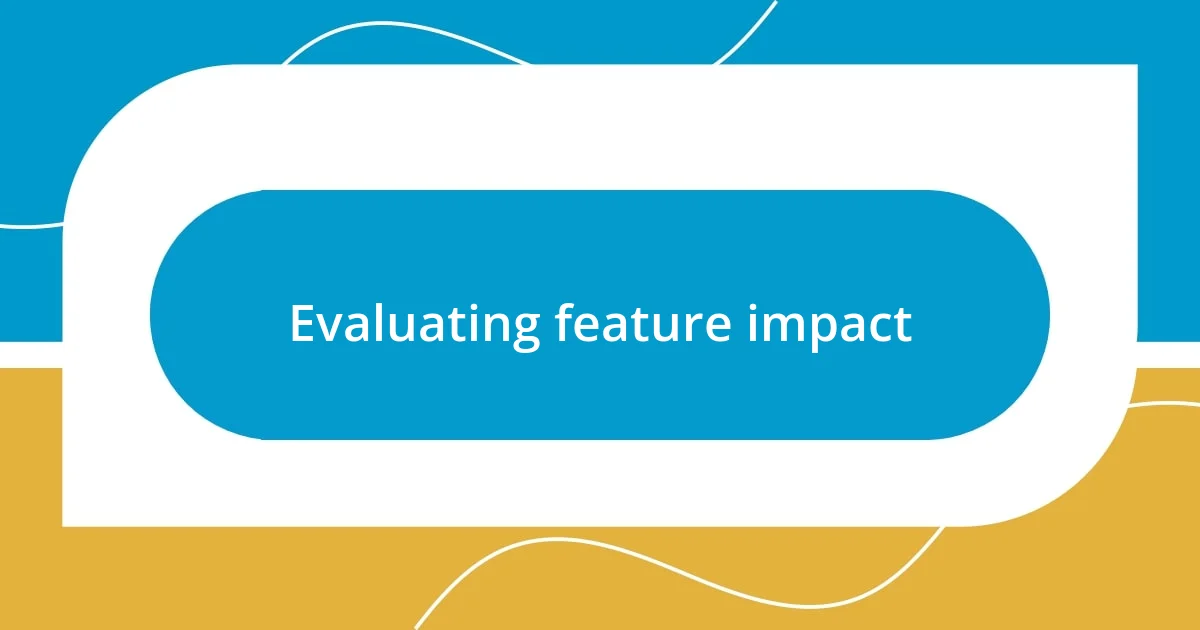
Evaluating feature impact
Evaluating feature impact requires us to step back and assess how each proposed feature aligns with our overall goals. I often think of this as a balancing act, weighing user needs against business objectives. Once, while redesigning a dashboard, I considered adding a trendy new graph, but my analysis revealed it would overcomplicate things for users. This moment reminded me that the impact must always be user-centered.
I use various methods to evaluate impact, including A/B testing and focus groups. For instance, I recall running a split test on two versions of a signup flow. One version included a progress bar while the other did not. The results were startling—users who saw the progress bar were significantly more likely to complete the signup process. Such insights can definitively shape my feature prioritization strategy, guiding decisions that genuinely enhance user experience.
Another technique I employ is calculating the potential return on investment (ROI) for each feature. Have you ever felt that emotional tug when you see a feature with great promise but also a lot of uncertainty? I felt that during a project where a new feature had the potential to engage users, but it also required heavy resources to implement. Analyzing the ROI not only calmed my instincts but led us to prioritize a more feasible option, reinforcing my belief that thoughtful evaluation paves the way for smarter feature selection.
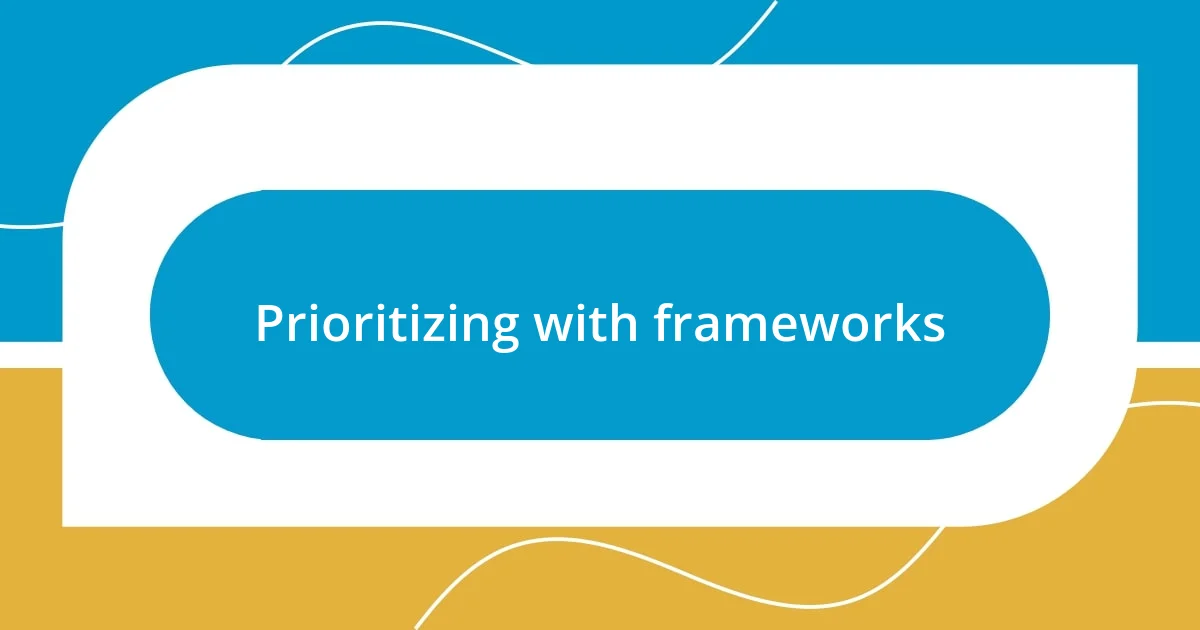
Prioritizing with frameworks
When it comes to prioritizing features, utilizing established frameworks can be a game changer. I often turn to the MoSCoW method—Must have, Should have, Could have, and Won’t have. This framework really helps in visualizing feature importance. I remember a time when we were overwhelmed with requests; applying this method allowed us to decisively categorize features, effectively reducing confusion and keeping the team focused.
Another framework I find useful is the RICE scoring model—Reach, Impact, Confidence, and Effort. Each feature gets evaluated based on these criteria, which simplifies comparing different ideas. In one project, I faced the daunting task of choosing between an enhanced search function and a new user profile feature. By breaking down each option through RICE, it became apparent that the search function would reach a broader audience and significantly improve user satisfaction. This clarity not only made decision-making easier but also fostered a stronger commitment from everyone involved.
While I cherish these frameworks, I always remind myself that they should serve as aids, not crutches. Do you remember a time when you felt stifled by a rigid structure? I recall a project where we adhered too strictly to a prioritization framework, leading to missed opportunities for innovation. Balancing frameworks with a touch of flexibility allows creativity to flourish alongside strategic prioritization. After all, the goal is not just to check boxes but to create an experience that resonates deeply with users.
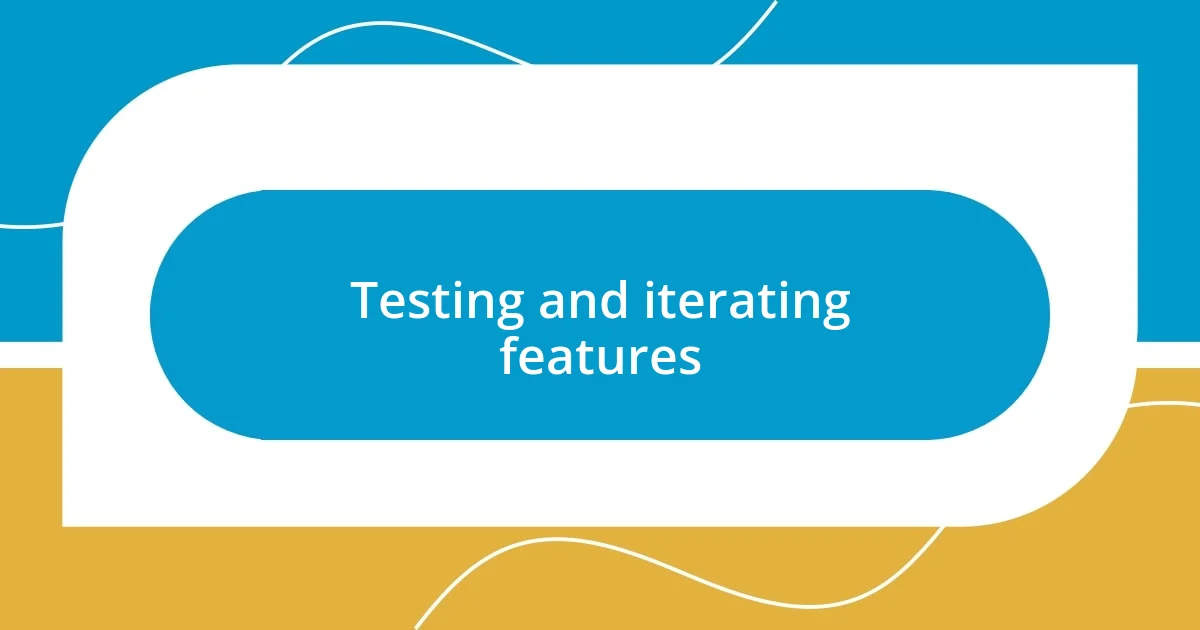
Testing and iterating features
Testing features is an essential step in refining user experience. I’ve often found that what seems like a groundbreaking idea on paper may not resonate well with users in reality. For instance, I once introduced a feature based on user feedback which turned out to confuse more than it helped. I was surprised by the disconnect; it made me realize the importance of testing before full-scale implementation.
Iterating is where the real magic happens. I remember the time I collaborated with our design team after a user testing session revealed that users struggled with a particular navigation element. We held brainstorming sessions, and the excitement among the team to improve the user flow was palpable. After multiple iterations, we managed to create a more intuitive design that users loved, reinforcing my belief in the iterative process. Isn’t it fascinating how incremental changes can lead to significant improvements?
Ultimately, I see testing and iterating as a journey rather than a destination. It’s about learning and adapting in real-time to what users need. There was a project I worked on where successive iterations transformed an initially underperforming feature into a favorite among users. That experience taught me that embracing feedback and being willing to pivot can breathe life into a product, making the development process both exhilarating and rewarding.
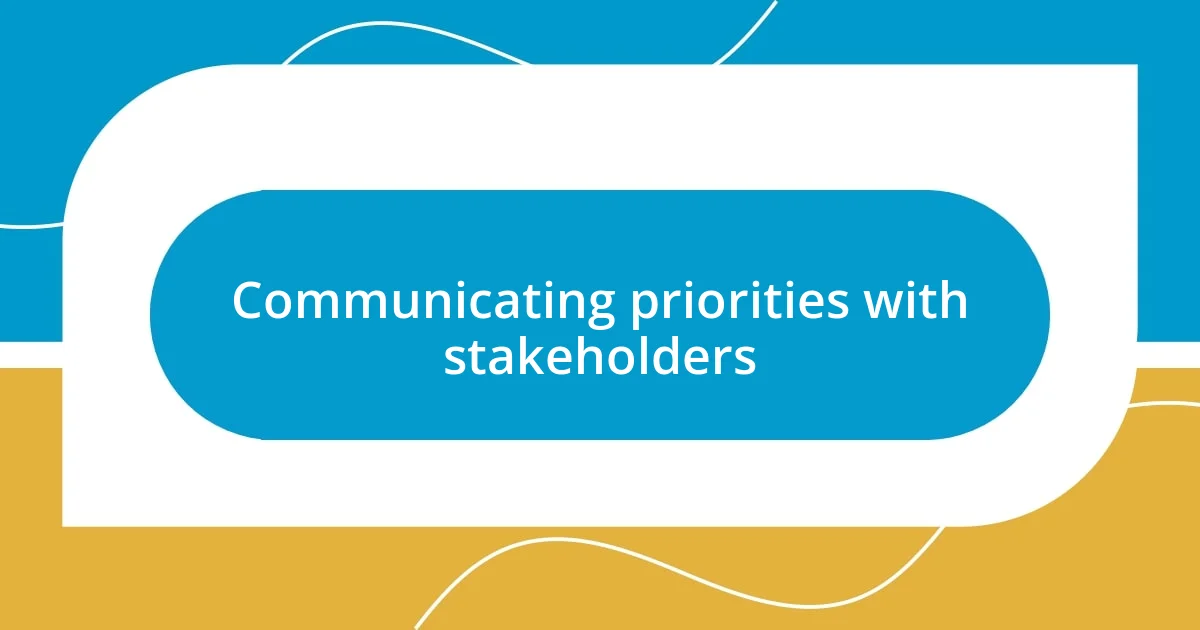
Communicating priorities with stakeholders
Communicating priorities with stakeholders is crucial for successful collaboration. I’ve learned that transparency is key. For instance, in one project, I organized a prioritization workshop where I presented our feature scoring results using the RICE model. The lightbulb moments during that session were priceless; stakeholders began to see how their priorities aligned or clashed with data-driven decisions. It fostered an open environment where everyone felt heard, which is always a win in my book.
Another effective strategy I use is regularly checking in with stakeholders throughout the project lifecycle. During a project focused on enhancing our mobile app, I made it a point to share weekly updates on progress and any shifts in feature priorities. It’s amazing how these touchpoints can ease concerns and keep everyone aligned. When team members feel informed and involved, it cultivates a sense of ownership over the project’s direction. Have you ever noticed how open lines of communication can transform a project atmosphere?
I also emphasize the importance of using visuals when communicating priorities. Early in my career, I learned that simply presenting data in charts or infographics can make a world of difference. Once, I created a visual roadmap that outlined feature timelines and dependencies, and stakeholders found it incredibly helpful. It sparked conversations that might not have happened otherwise, bridging gaps in understanding and aligning expectations. Clear visuals help demystify priorities and keep the focus on what truly matters.












